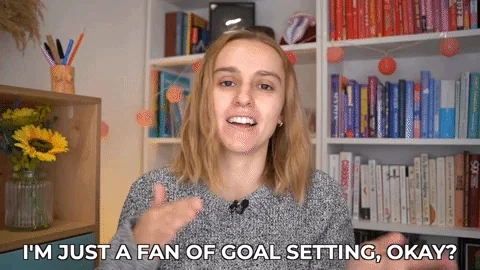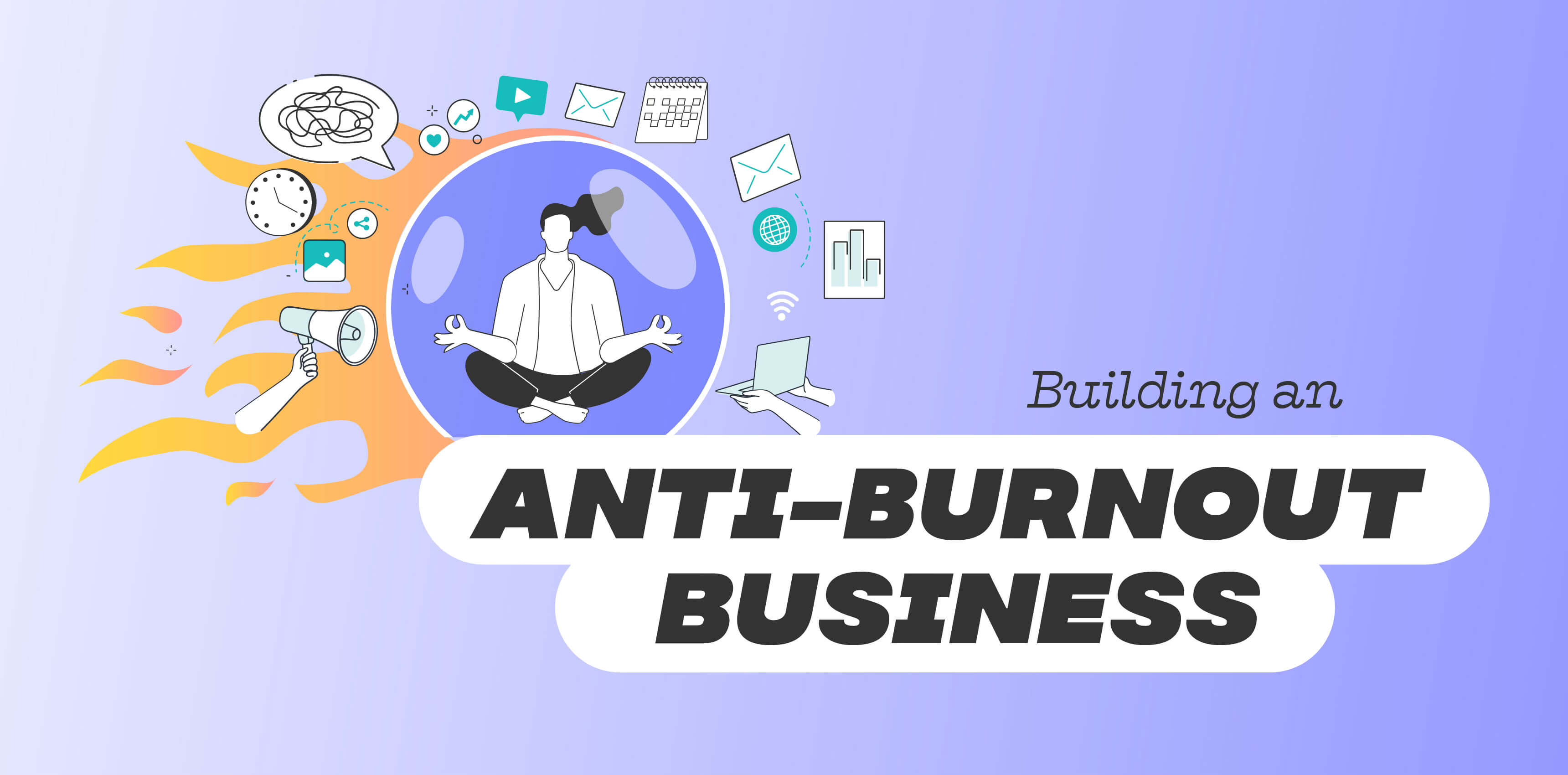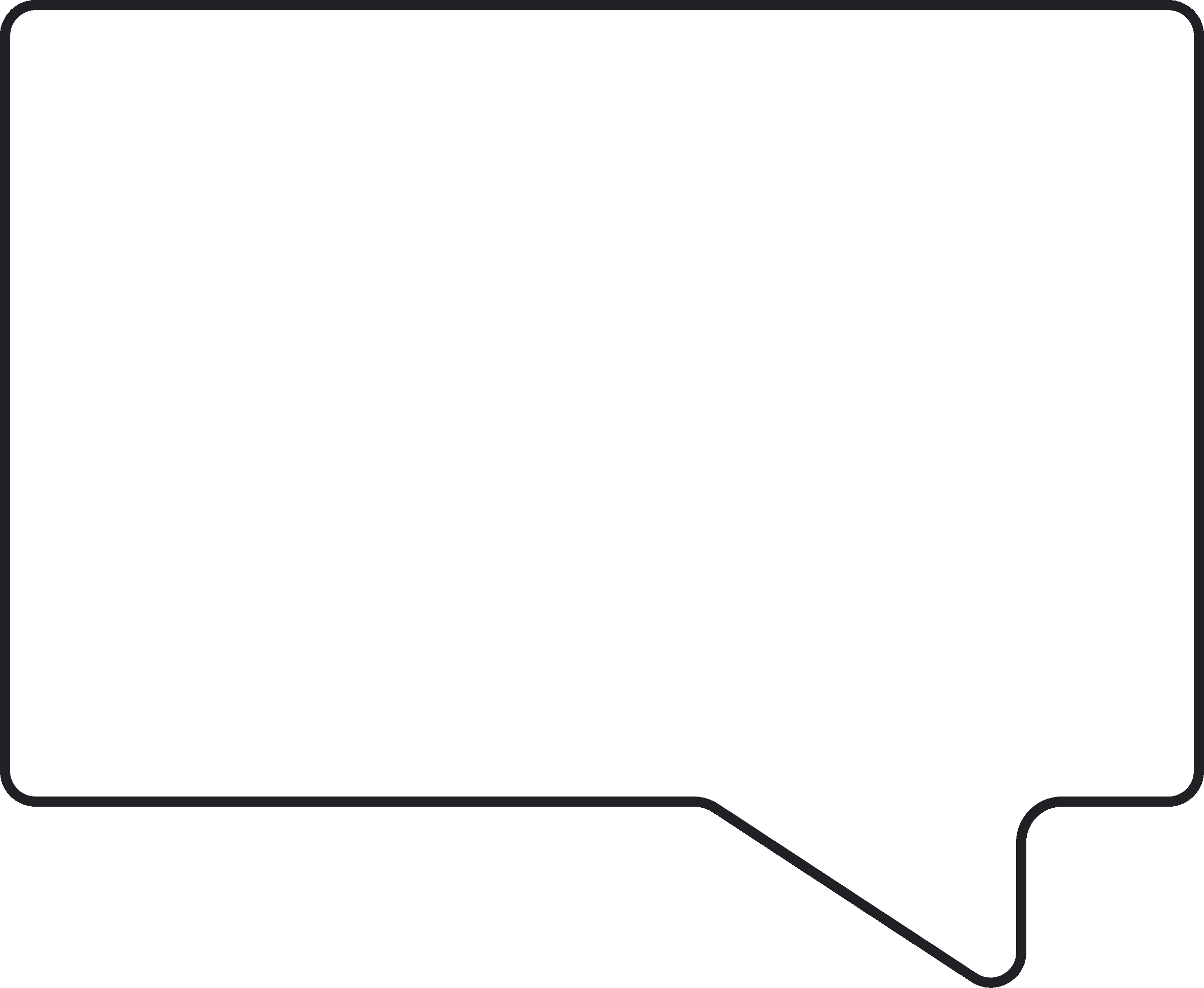by
Caroline Zook
This article will walk you through actionable steps to create a sustainable foundation for your business, tailored to your specific needs and situation.
Part 1: Setting Realistic Expectations and Enough-Based Goals
The first key step to avoiding burnout starts with goal-setting. You may already be aware of why goal-setting is important but if you’ve run into burnout many times, it might be time to switch up your goal-setting approach.

Why Goal Setting Matters 🎯
Avoid Constant Striving for More: Without goals, you might constantly push for more without a clear purpose, leading to burnout.
Set Realistic Goals: Avoid huge goals with short timelines, which are unrealistic and unsustainable.
Our Recommended Burnout Antidotes
Define Your Enough Number: Determine what “enough” looks like for you in terms of money, subscribers, and time.
Monthly Minimum Magic (MMM) Number: Calculate your baseline monthly expenses to understand the minimum income you need to break even.
Create Realistic Timelines: Extend your business timelines from months to years to avoid pressure and burnout.
Prioritizing Patience
Embrace Patience: Accept that success takes time. Planning for a 3-6 year timeline helps reduce stress and avoid burnout.
Focus on Long-Term Goals: Patience will help you manage revenue dips, changes in social media algorithms, and other setbacks.
Part 2: Choosing the Right Business Model
Building a business of ease and freedom starts with making sure your foundation actually lends itself to… ease and freedom!
No business model is perfect and different business models bring different types of stressors.
If your business is built on a foundation that requires you to stay on an endless content treadmill (like a YouTube sponsorship model, for example) when producing content is especially taxing for you, that’s a recipe for burnout. Or maybe your business model requires you to work 1-and-1 with clients when you don’t do well with other people’s expectations and schedules; that’s also going to lead you to burnout.

Identifying the Right Model for You
Match Your Skills and Interests: Choose a business model that aligns with what you enjoy and excel at.
Understand the Trade-offs: Every business model has its challenges. Select the one with the least undesirable aspects for you.
You Will Have to Eat a “Shit Sandwich” 💩🥪🙊
Elizabeth Gilbert talks about this idea of a “shit sandwich” in her book, Big Magic. What she means by that phrase is: there are going to be parts of any creative process that aren’t particularly enjoyable but that are worth choosing anyway. Your job is to decide which flavor of “shit sandwich” you’re willing to eat aka which sucky parts you’re willing to move through.
The truth is, when it comes to running a business, there are going to be crappy parts that take away from the joyful and awesome stuff. Find the business model or revenue strategy that feels worth it to you, even when you take into consideration the parts that are less than ideal.
An anti-burnout business model means you’re trying to maximize spending time and energy on the good stuff you LOVE and are passionate about. But, you’re also smart enough to acknowledge there will be hard problems to solve and you’re choosing a specific business model because the positives outweigh the negatives.
Every Business Has Challenges: Be prepared to deal with the less enjoyable parts of your chosen model. The key is to pick a model where the positives outweigh the negatives.
Experiment and Pivot: Use an experimenter’s mindset. Try different approaches and be ready to pivot if something isn’t working.
Part 3: Setting Boundaries
We’ve talked about creating a foundation that is sustainable for you, in this next part, we’re going to focus on your day-to-day actions and how those actions can keep you from over-extending yourself.
One of the quickest ways to ride the bullet train to Burnout Town is by not having firm boundaries. When it comes to the amount of hours you work each day and what things take priority on your to-do list, it’s important to remember (if you work for yourself) that YOU are your own boss!
You make the schedule, you set the priorities each day/week/month, so it’s within your power to make sure you’re not burning the candle at both ends.

Work Hour Boundaries 🙅♀️
Define Your Working Hours: Decide how many hours you want to work each day and when you are most productive. Stick to these hours to avoid overworking.
Lines in the Sand: Establish non-negotiable boundaries, such as no calls on certain days or setting clear response times for clients.
Creating an Inspiring Workspace 🤩
Dedicated Work Space: Separate your work area from your living space to create a clear boundary between work and rest.
Tailor Your Workspace: Make your work area enjoyable and conducive to productivity.
Taking Intentional Breaks 🧘♀️
Daily Walks: Schedule short breaks to clear your mind and recharge.
Content Breaks: Take regular breaks from content creation to avoid burnout.
Part 4: Accepting and Managing Burnout
In this final section, rather than give you one more tip for avoiding burnout, we thought it would be far more practical to talk about the burnout-elephant in the room, which is this: despite following the tips we outlined, you WILL likely burn out anyway. 🙈🙈

Acknowledge Burnout
It’s Common: Burnout happens to everyone. Accept that it’s a part of the entrepreneurial journey and learn from it.
Mindset of Acceptance: Having a mindset of acceptance can help you bounce back more confidently.
Handling Burnout
Give Yourself Time: Allow yourself to take a break and recover. Pushing through burnout will only prolong it.
Separate Work from Self-Worth: Remind yourself that your work does not define your worth.
Building Guardrails
Set Boundaries: Reevaluate and reinforce your boundaries to prevent future burnout.
Avoid Shiny New Object Syndrome: Be cautious of investing too much time and energy into new trends without considering their sustainability.
Conclusion: Your 19-Step Plan to Avoid Burnout
Define your enough number (and MMM number if you don’t know it).
Stop listening to overnight success advice.
Extend your timelines to years, not months.
Embrace patience.
Accept that slow-and-steady wins the race.
Choose a business model that suits you.
Accept the inevitable challenges.
Use an experimenter’s mindset.
Give yourself permission to pivot.
Set your work hour boundaries.
Draw clear lines in the sand.
Create an inspiring workspace.
Develop good work habits.
Schedule intentional breaks.
Accept that burnout will happen.
Recognize that everyone experiences burnout.
Build a burnout savings plan.
Decide on guardrails for recovery.
Be cautious of new trends leading to burnout.
Implementing these steps will help you create a sustainable and enjoyable business, reducing the risk of burnout and allowing you to thrive over the long term. Remember, your journey is unique, and success is about creating a business that works for you.
Join 12,000+ intentional business owners and get our Growing Steady newsletter every Monday where we share transparently about the latest projects we’re working on. You'll also get our Calm Creator Canva Whiteboard as a free download!













